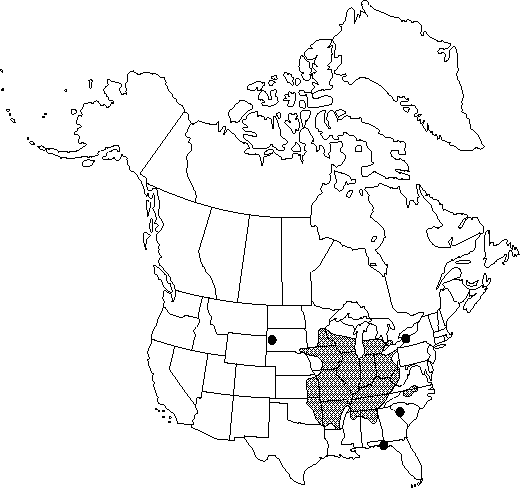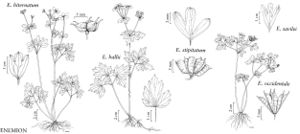Difference between revisions of "Enemion biternatum"
J. Phys. Chim. Hist. Nat. Arts 91: 70. 1820.
FNA>Volume Importer |
imported>Volume Importer |
||
| Line 57: | Line 57: | ||
|publication year=1820 | |publication year=1820 | ||
|special status=Endemic;Illustrated | |special status=Endemic;Illustrated | ||
| − | |source xml=https:// | + | |source xml=https://bibilujan@bitbucket.org/aafc-mbb/fna-data-curation.git/src/bb6b7e3a7de7d3b7888a1ad48c7fd8f5c722d8d6/coarse_grained_fna_xml/V3/V3_853.xml |
|genus=Enemion | |genus=Enemion | ||
|species=Enemion biternatum | |species=Enemion biternatum | ||
Revision as of 23:06, 27 May 2020
Stems 10-40 cm, weakly rhizomatous; roots fibrous. Leaves: leaflets irregularly 2-3-lobed, lobes sometimes with 1-3 secondary lobes, apex rounded, glandular-apiculate; surfaces abaxially glabrous. Inflorescences axillary, flowers solitary or loosely grouped in 2-4-flowered leafy racemes; peduncle not strongly clavate. Flowers: sepals 5.5-13.5 × 3.5-8.5 mm; stamens 25-50; filaments filiform to club-shaped, 1.8-5.8 mm. Follicles sessile, upright to widely divergent; body widely elliptic to widely obovate, 3.5-6.5 mm, gradually contracted into style beak; beak 1.7-3 mm. Seeds 2.1-2.7 mm, minutely pubescent. 2n = 14.
Phenology: Flowering spring.
Habitat: Moist deciduous woods of valleys, flood plains, and ravine bottoms, occasionally in open pastures, often on limey soils
Elevation: 25-1000 m
Distribution

Ont., Ala., Ark., Fla., Ill., Ind., Iowa, Kans., Ky., Mich., Minn., Miss., Mo., N.Y., N.C., Ohio, Okla., S.C., S.Dak., Tenn., Va., W.Va., Wis.
Discussion
Enemion biternatum has been mistaken for the superficially similar Thalictrum thalictroides because of its white flowers and compound Thalictrum-like leaves. Enemion biternatum is easily distinguished, however, by its few-seeded follicles and deeply lobed leaves with glandular-apiculate apices. Thalictrum thalictroides, on the other hand, is characterized by having achenes and somewhat crenate leaves with notched apices.
Selected References
None.
